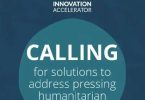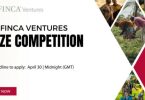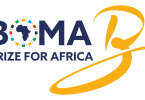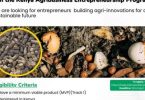Call For Applications: Partnerships for Innovative Research in Africa ( Up to 100,000USD Funding)
The Alliance for African Partnership (AAP), a consortium of ten leading African universities, a distinguished research network for African research institute, and Michigan State University, is inviting proposals for its Partnerships for Innovative Research in Africa (PIRA) strategic funding program. As a consortium-wide initiative, PIRA is a tiered funding opportunity designed to cultivate and support multidirectional, collaborative research partnerships at any stage of their development, whether they are initiatives to explore and create new relationships or scale existing ones. One of the unique aspects to these grants is the expectation that organizations will establish and develop fair and equitable partnerships from conception to closeout of the project, involving local stakeholders throughout the project, respecting their knowledge and expertise, and taking an adaptive approach that is responsive to the local context. Proposals should outline processes to establish such partnerships. Fair and equitable partnerships must also be established among members of the consortium if multiple organizations are working on the implementation of the project. Proposed partnership activities may entail cooperative research, capacity building initiatives, outreach and/or other activities that align with AAP’s pillars of building bridges, transforming institutions, and transforming lives. Proposals must address at least one of AAP’s priority areas: agri-food systems; water, energy and environment; culture and society; youth empowerment; education; health and nutrition; and, science, technology, and innovation.
Proposals are encouraged from diverse disciplinary perspectives. Submitted proposals must include principal investigators from both MSU and at least one African AAP member university. The project implementation timeframe will be 18 months.
FUNDING TIERS
The tiered funding structure is designed to support partnerships at different stages of maturity to create and strengthen relationships among institutions and act as a catalyst for research teams in securing external funding that will allow for long-term engagement. Applicants should submit proposals for the funding tier that best fits the level of engagement established among the PIs on the research team. However, AAP management reserves the right to relegate proposals to a different tier if deemed more appropriate during review. To ensure broad impact, more awards will be given at the planning grant level than the scaling grant level. Proposed activities for each tier may include, but are not limited to:
- Planning Grants (up to $50,000), inception and early-stage partnership research activities, travel support for co-developing joint proposals (in accordance with all MSU travel guidelines), short-term capacity building training, network development, research symposia, or other activities that align with AAP’s priority themes and strategic objectives.
- Scaling Grants (up to $100,000), continuation of ongoing partnerships that have the potential to significantly scale their research, capacity building, or outreach activities, broader institutional linkages, or other activities that align with AAP’s priority themes and strategic objectives.
ELIGIBILITY
- The lead investigators for proposals must come from MSU and AAP African member universities. Proposals may also include partners from other institutions globally. Teams are encouraged to include partners from the private sector, governments, civil society organizations, and pan-African/global institutions.
- Individuals who were PIs or co-PIs on grants from the previous round of PIRA grants or AAP’s strategic partnership grants are not eligible to lead proposals under this call but may participate as team members.
- MSU ISP staff are not eligible to lead proposals.
GUIDELINES FOR APPLICANTS
All submissions must have a cover sheet and proposal narrative that includes the information listed below, a budget and budget narrative using the provided template, and letters of support. Please submit all application material via the application portal by Wednesday, August 14 at 11:59 PM EST.
- Application with the project’s title as well as names, institutional affiliations, titles of all principal investigators, and a brief (about 100 words) project summary
- A proposal narrative, not to exceed 5,000 words with one appendix for references cited, that includes:
- A description of the partnership, containing:
- Capacity statements from each partner institution that outlines their respective strengths in relation to their proposed roles and responsibilities in the partnership
- A brief description of the past or ongoing partnership, if applicable
- The rationale for partnership and evidence that it will create or cultivate equitable, sustainable, and mutually beneficial partnerships
- A problem statement that identifies the shared challenges to be addressed by the program activities, the theory of change, their relevance to AAP’s themes and pillars
- Clearly defined objectives of the proposed partnership
- A description of program activities as well as a logical framework that connects the proposed activities with their intended outputs, outcomes, and programmatic objectives
- A timeline of activities
- A monitoring, evaluating, and learning plan that outlines proposed indicators and collection methods
- Identification of potential sources of additional funding that the partnership will pursue during the program’s period of performance
- A description of the partnership, containing:
- A line-item budget and budget narrative using the template provided. Templates and more information on budgetary considerations are below in BUDGET. A letter of support from each partner’s department, institution, or organization; and A CV or resume of each principal investigator (1-page max).
- A letter of support for each PI from their dean or head of department that signifies buy-in from each partner at the institutional level. Please use the provided template
SELECTION CRITERIA
Program goals should align with at least one of AAP’s pillars:
- Building bridges: Bringing people and organizations together to work toward common goals. Illustrative activities under this objective include: sponsoring thematic symposia or workshops that bring people together across sectors and disciplines or travel for preparation of proposals for larger grant applications. This also includes network development, communications among research groups or networks (e.g. digital innovations and digital forums), dissemination of knowledge through online journals and/or sharing of best practices among partners
- Transforming institutions: Promoting sustainable and effective partnerships among institutions, enhancing resources, and increasing institutional capacity. Illustrative activities under this objective include: institutional capacity development at universities, NGOs, or in the public sector such as building financial management capacity, improving teaching and learning at universities, and/or increasing proposal development skills, among others.
- Transforming lives: Supporting research with real-world impact that improves African lives and livelihoods. Illustrative activities under this objective include: putting research into action through evidence-based outreach and engagement, conducting early-stage research that has obvious potential to impact lives and livelihoods, improving dissemination of research outputs to practitioners and policy-makers, and/or designing innovative research-into-practice methodologies.
Submitted proposals will be evaluated according to the following criteria:
- Evidence of a collaborative and equitable partnership that strengthens personal, professional, and/or institutional networks in a mutually beneficial and sustainable way. Other AAP principles that need to be demonstrated in the proposal and later in the implementation are mutual trust and respect, sustainability, innovativeness, co-creation, accountability, transparency, flexibility as well as multi-disciplinarity and trans-disciplinarity.
- Alignment of proposed activities and program goal(s) to AAP’s 3 strategic objectives and 7 priority areas.
- Potential for program deliverables to significantly contribute to their respective academic, technical, or technological fields.
- Potential to create innovative models of community engagement and development that positively impact people’s lives.
- Potential for principal investigators to attract and or leverage additional external funding to sustain program’s impact.
- A thorough monitoring, evaluating, and learning plan that links program activities to their intended outputs and outcomes and includes a clear description of the MEL tools that will be used, what indicators will be measured, and a timeline for evaluation and reporting.
- Gender equality, equity and inclusion are core values of AAP and are thus central to this call. All projects funded must demonstrate how they follow principles of gender and inclusion and should explain how applicants will integrate gender, equity, and inclusion issues in all stages of the project, including rationale, design, intended results, data collection, analysis, interpretation, and knowledge mobilization processes.
BUDGET
Using the template provided, applicants must submit a line-item budget and budget narrative for the life of the program that details each institution’s requested budget as well as an overall budget summary. Suggested line items are provided as guidelines but are not comprehensive or required. Proposed budgets should be co-created by the partnership teams and reflect an equitable distribution of funds, with each institution completing a separate tab within the budget template to show the anticipated disbursement of resources and cost sharing broken down by yearly expenditures. The budget narrative should clearly explain how the line items are calculated and for what purpose they will be used in achieving the program’s objectives. Please note that the MSU PI and their home department will be responsible for the financial administration of the award. As such, it is required that the MSU PI involve their department’s fiscal officer in the development of the proposed budget to ensure all financial guidelines and reporting requirements are met. Please submit budgets as an Excel file or similar formatted version that allows the reviewers to view the formulas used in the calculations.
Communications and Engagement
10% of the total requested funds must be earmarked for communication and engagement efforts. For example, if a team is requesting a scaling grant for $100,000, at least $10,000 of that must be budgeted for communication and engagement efforts, such as developing creative projects that translate the research, engagement workshops and developing and utilizing dissemination tools such as video production, creation of digital resources, community engagement activities, etc.
Cost Share
10% of the total requested funds must be matched with contributions (monetary and/or in-kind) from all partners. The Co-PIs’ colleges, faculties. and/or departments will be expected to contribute to the costs of the proposed activities to ensure that the commitment to long-term partnering is shared by these units.
Ineligible Expenses
While funding may be used for a variety of activities, the following expenses are not eligible to be covered with the PIRA grants:
- Regular salary of MSU faculty (summer salary is allowable)
- Indirect costs (IDC)
- Equipment exceeding $5,000
- Construction-related costs
Total project salary & fringe cannot exceed 30% of the total combined project budget.
SELECTION PROCESS
Proposals will initially be reviewed by the AAP management team according to the guidelines and criteria above. Short-listed applications will be assessed by external peer reviewers for quality of technical content. Final selections will be made by the AAP management team in consultation with its internal partners and consortium members.
SUBMISSION AND AWARD TIMELINE
APPLICATION PORTAL
If you are interested in finding a potential partner across the AAP consortium, please complete an interest form and be sure to check out AAP Bridge.
Full proposal packages are due on Wednesday, August 14 at 11:59 PM EST and awards will be announced by early October. AAP management will work with awardees to finalize the plan and budget by November 20, 2024. Programs may begin according to their timeline but not before a final work plan and budget has been approved by AAP management. Programs must begin no later than January 22, 2025 and all program activities must be completed within 18 months of the start date. Progress will be due to AAP management at regular intervals throughout implementation. In addition, AAP will be conducting intermittent surveys of the awardees to evaluate the PIRA grant-making process and how successfully it embodies the AAP’s values of equity, transparency, and accountability.






